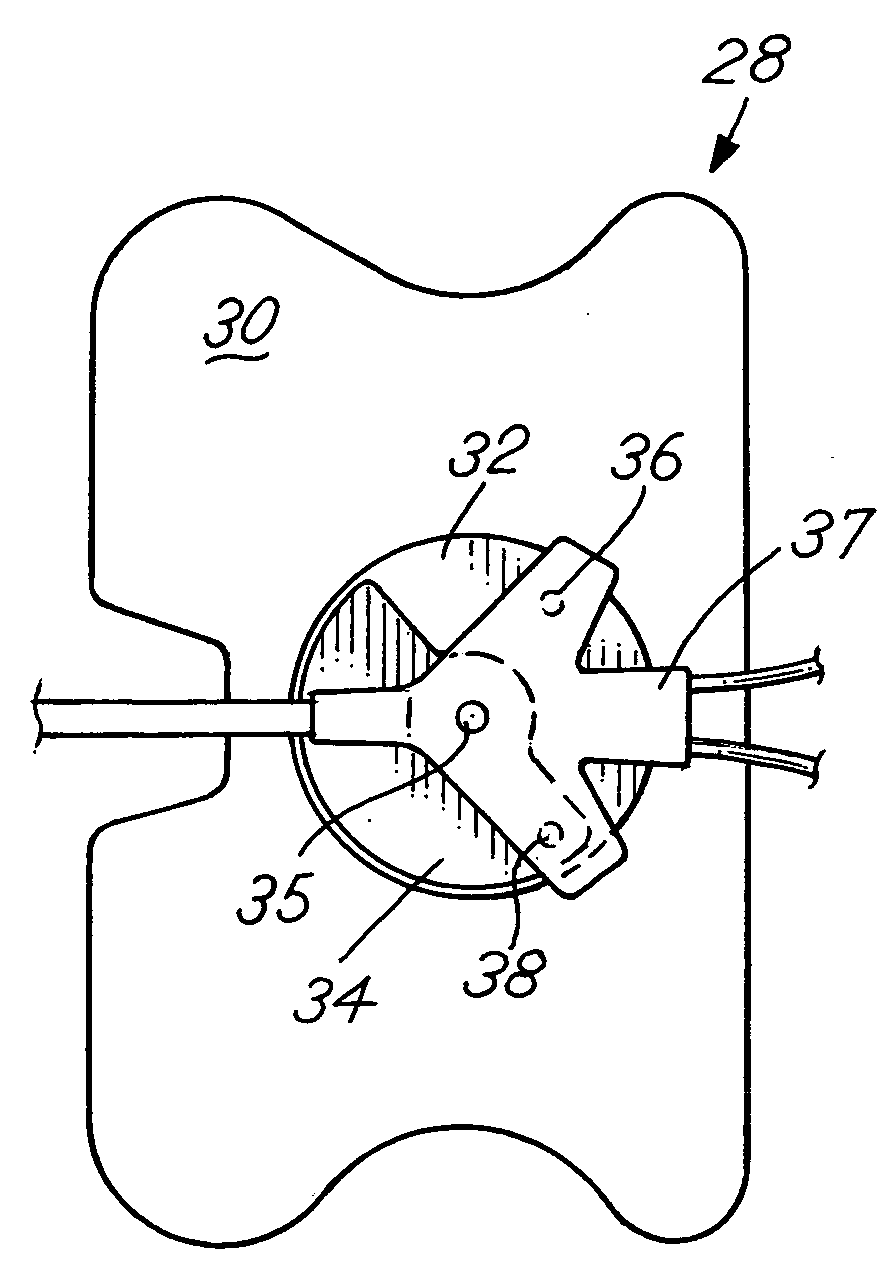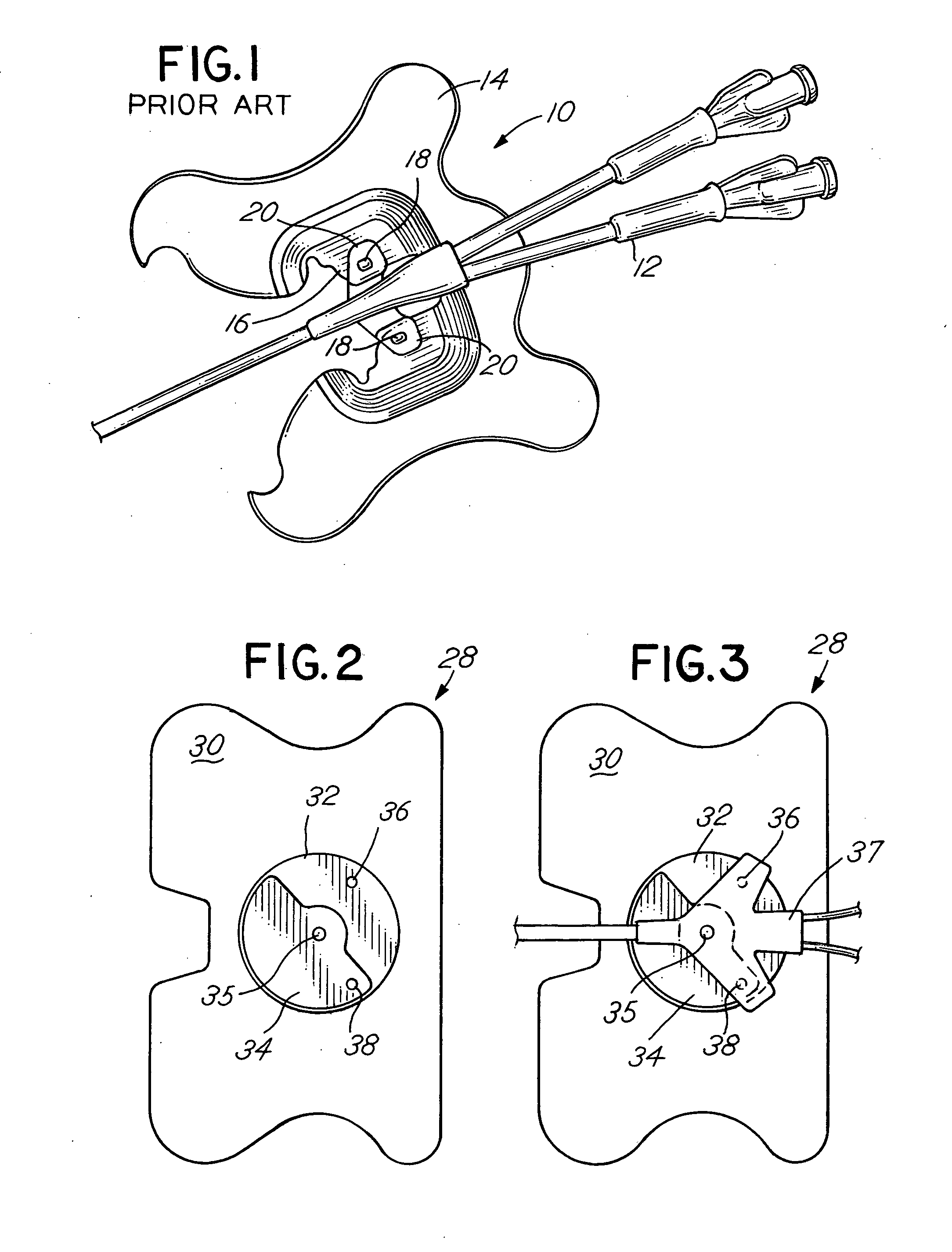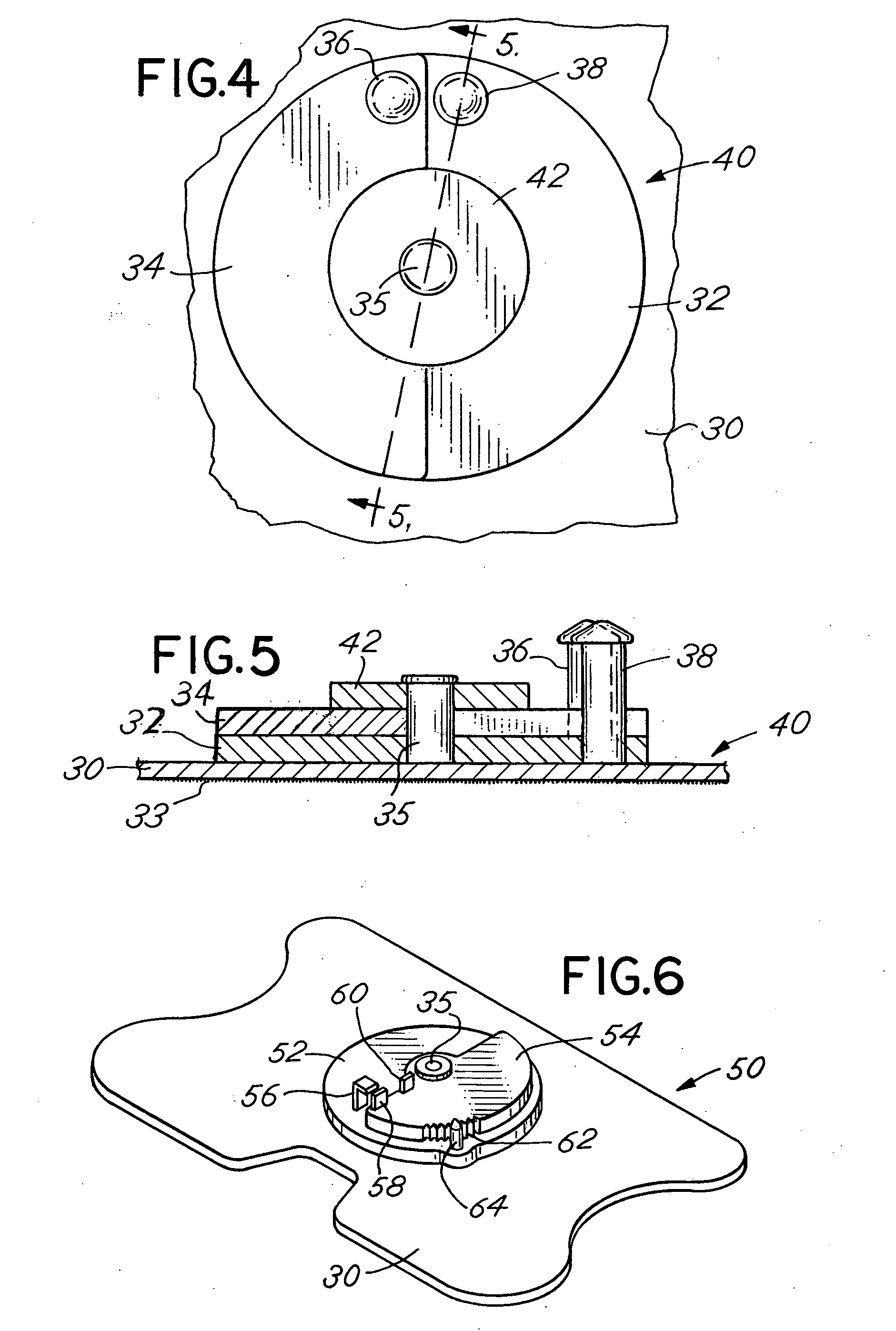Catheter securement device
a securement device and catheter technology, applied in the field of securement devices, can solve the problems of limited operation of the catheter anchoring system of the u.s. pat. nos. 6,582,403 and 6,770,055, and achieve the effects of enhancing engagement with the medical implement, enhancing gripping or securing the catheter, and restricting the rotational movement of the adjustable pla
- Summary
- Abstract
- Description
- Claims
- Application Information
AI Technical Summary
Benefits of technology
Problems solved by technology
Method used
Image
Examples
Embodiment Construction
[0029]Referring to FIG. 1, there is shown a prior art device for securing peripherally-inserted central catheters (PICC) in place on a patient. The device 10 for securing the catheter 12 in place includes a base 14 adapted to be secured to the skin of a patient by an adhesive. Affixed to the base 14 is an adapter 16 having a pair of posts 18 extending upwardly therefrom. The posts 18 engage in openings in the wings 20 of the catheter 12 for securing the catheter 12 in place on the device 10. A separate adapter is needed for a specific catheter and the usefulness of the device is therefor limited.
[0030]With reference to FIGS. 2 and 3, there is disclosed a securement device 28 that can be used more universally to secure winged catheters with different spacings between the openings in the wings of the catheter. The securement device 28 includes a base or pad means 30 having adhesive on at least a portion of one surface (the surface adapted to face and engage the patient) and a fixed me...
PUM
 Login to View More
Login to View More Abstract
Description
Claims
Application Information
 Login to View More
Login to View More - R&D
- Intellectual Property
- Life Sciences
- Materials
- Tech Scout
- Unparalleled Data Quality
- Higher Quality Content
- 60% Fewer Hallucinations
Browse by: Latest US Patents, China's latest patents, Technical Efficacy Thesaurus, Application Domain, Technology Topic, Popular Technical Reports.
© 2025 PatSnap. All rights reserved.Legal|Privacy policy|Modern Slavery Act Transparency Statement|Sitemap|About US| Contact US: help@patsnap.com



